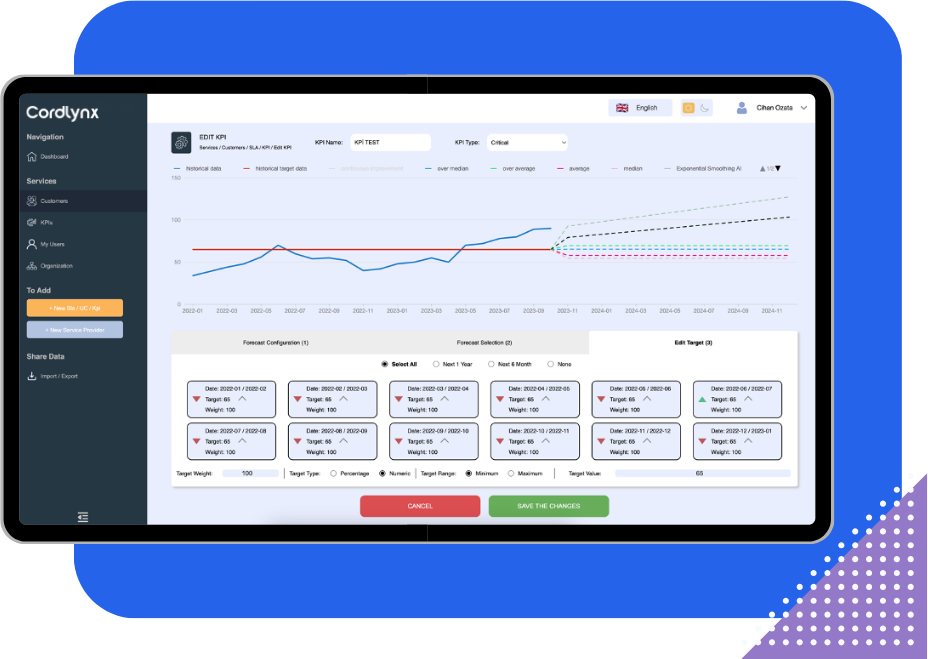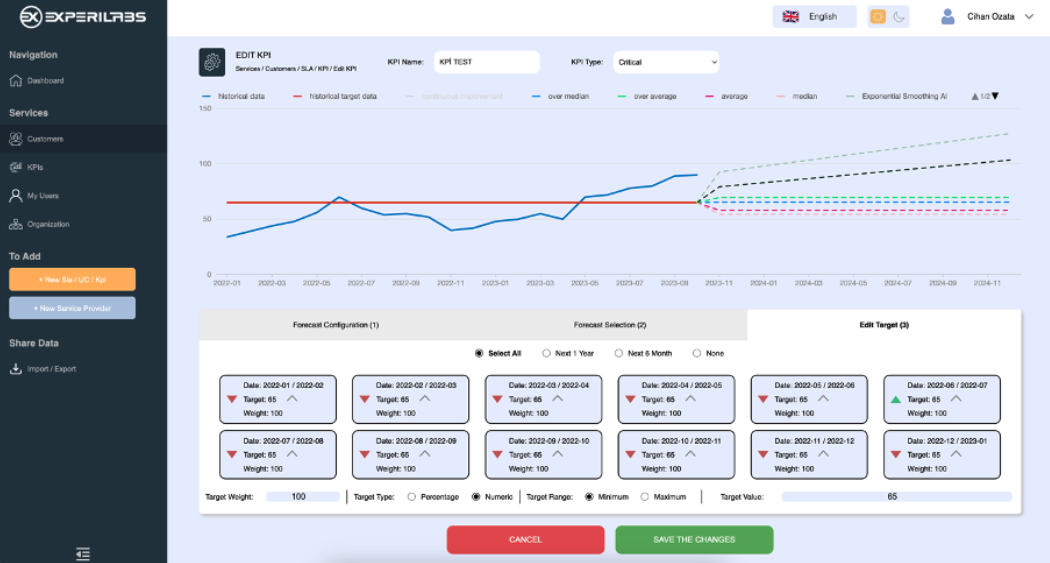- About
- Services
IT Outsourcing & Consultancy
Custom Software Development
Data Analytics & AI
Managed Software Services
Innovation & Tech. Service
- Products
IntraHub
Easy employee communication and feedback.Owlex
OWLEX Brings Cutting-Edge Technology to Your Fingertips!Cordlynx
Bid farewell to manually handling KPIs and SLAs.Dealer Order Portal
Dealer Order Portal: Streamlined business processes. - Success Stories
- Insights
- Contact
Cordlynx
Revolutionize Your Performance with AI-Powered SLA & KPI Management

What is an SLA?
An SLA (Service Level Agreement) is a legally binding contract that clearly defines the expected level of service between a service provider and a customer. It outlines specific performance metrics, acceptable thresholds, and the consequences of failing to meet those standards.
Benefits of SLAs:
Customers:
- Ensures consistent and reliable service delivery.
- Provides clear expectations for performance.
- Establishes a mechanism for addressing service disruptions.
Service Providers / Suppliers:
- Sets clear benchmarks for performance.
- Optimizes resource allocation and service delivery.
- Provides a framework for resolving service-related disputes.
- SLAs: Tracking Performance and Accountability
- SLAs are valuable tools for monitoring performance and ensuring accountability within your organization.
SLAs: Tracking Performance and Accountability
SLAs are valuable tools for monitoring performance and ensuring accountability within your organization.
They can be used to track service level commitments of internal departments, suppliers, and subcontractors, guaranteeing everyone meets their agreed-upon obligations.
Similarly, you can define your own SLAs based on customer contracts, clearly outlining your service commitments.

Illustrative Examples of SLAs in Action
Subcontractor On-Time Delivery
An SLA might specify that a garment manufacturer's fabric dyeing subcontractor must deliver dyed fabrics within 90% of the agreed-upon timeframe.
Garment Manufacturer On-Time Delivery
A separate SLA might specify that the garment manufacturer must deliver finished products within 95% of the agreed-upon timeframe, potentially broken down by product type, order size, or destination.
Product Quality
An SLA could define acceptable defect rates for fabric or finished garments, ensuring consistent quality.
Customer Service Response Time
An SLA might outline the expected response time for customer inquiries or complaints related to orders or product issues, specifying different response times for various communication channels and prioritizing urgent issues.
Key Differences Between KPIs and SLAs:
While both SLAs and KPIs are crucial for performance management, they serve distinct purposes:
Focus:
- SLA: Defines the minimum acceptable service level standards.
- KPI: Measures how well the organization is performing against those standards.
Scope:
- SLA: Typically focuses on broader service aspects like timelines, availability, and quality.
- KPI: Tracks specific metrics that contribute to overall performance and goal achievement.
Example:
- SLA: An SLA might define a minimum uptime of 99.5% for production machinery.
- KPI: A KPI could track the actual uptime of the machinery, allowing analysis of potential downtime causes and areas for improvement.
Relationship Between SLAs and KPIs:
Cordlynx: Your AI-Powered Solution for SLA & KPI Management
Additional Features:
- Customizable Dashboards: Track specific KPIs and metrics relevant to your roles or departments.
- Alerting and Notification System: Get notified of potential SLA breaches or performance deviations.
- Reporting and Analytics: Generate comprehensive reports and conduct in-depth data analysis.
- Integration Capabilities: Integrate with existing IT infrastructure and business applications.
- Scalability and Security: Adapt to growing business needs while maintaining robust security.
Who Can Benefit from Cordlynx?
Cordlynx empowers organizations across various industries to effectively manage SLAs and KPIs:
Key Differences Between KPIs and SLAs:
- Businesses of All Sizes: From small startups to large enterprises, Cordlynx can help optimize service delivery and performance across various departments and teams.
- IT Service Providers and Managed Service Providers (MSPs): Ensure reliable IT infrastructure and service delivery for their clients by effectively managing SLAs.
- Customer Service and Support Teams: Enhance customer satisfaction by tracking and meeting response time expectations for inquiries and complaints.
- Supply Chain Managements: Companies and organizations with dedicated Supplier Performance Departments or Supplier Management functions will significantly benefit from Cordlynx. It empowers them to effectively track supplier performance and leverage this data to optimize their supply chain management.
Specific Use Cases:
- Monitor Uptime and Availability: Track the uptime of critical infrastructure and systems to minimize service disruptions and downtime.
- Track Response Times: Ensure prompt and efficient communication with internal and external stakeholders by monitoring and improving response times across various channels.
- Measure On-Time Delivery and Fulfillment: Track performance against agreed-upon delivery timelines and identify areas for improvement to meet customer expectations.
- Analyze Resource Utilization: Gain insights into resource allocation and identify potential bottlenecks within processes to optimize efficiency.
- Demonstrate Compliance: Maintain compliance with industry regulations and quality standards by effectively tracking and reporting on relevant performance metrics.

Revolutionize Your Performance with Cordlynx
Cordlynx provides a comprehensive and user-friendly solution to revolutionize your SLA and KPI management, driving operational excellence and achieving your business goals. Contact us today to learn more about how Cordlynx can transform your performance management strategy.
Data Enterance
Entering data for comparing actual performance against SLAs and KPIs can be done either manually or through seamless integration with your existing systems. Experilabs' extensive expertise in integration ensures effortless Cordlynx usage, minimizing manual data entry and maximizing efficiency.
